Our planet faces a threat like no other in human history - climate change. We must act now to accelerate the renewable energy revolution and dramatically reduce greenhouse gas emissions.
But we must avoid harming nature and communities in the process. Poorly-sited renewables (including wind, solar and hydropower) could exacerbate the global biodiversity crisis and fuel local conflicts, which could even slow efforts to transform power grids and tackle climate change.
Hydropower in particular — which has long been the world’s dominant renewable energy source — can cause significant negative impacts on rivers and the people that depend on them.
Fortunately, we can minimize negative impacts on nature by investing in the right renewables in the right places. We can now meet global climate and energy goals without driving greater nature loss, sacrificing the world’s last free-flowing rivers, and harming communities.
Challenge
To keep global warming below 1.5 degrees and limit the impacts of climate change, we need to move towards zero emissions by 2050. This will only be achieved with a rapid and massive expansion in renewable energy.
The International Energy Agency (IEA) projects that the global proportion of generation from renewable sources will need to grow from 38% today to over 90% by 2050 - with the largest increases coming from solar and wind.
However, we need to develop the right renewables in the right places. Otherwise, this dramatic increase in renewables could come with high costs for communities and nature.
In addition, conflicts triggered by poorly-planned, renewable energy projects could undermine support for renewables, slowing the pace of their expansion and making it harder to reach targets.
Take hydropower: many forecasts include a doubling of global hydropower capacity by 2050. But hydropower dams — particularly those on free-flowing rivers — can have considerable negative impacts, leading to conflicts with people and other development objectives.
Fortunately, the renewable energy revolution — made possible in part by the plunging price of solar and wind generation, and battery technology, alongside comprehensive planning tools for site selection — can succeed by identifying development pathways that minimize conflicts.
Countries can move beyond 20th century thinking and opt instead for sustainable, 21st century solutions. They can now build power grids that are LowCx3: low carbon, low cost and low conflict. Below we explore the resources at risk and how countries can achieve LowCx3 power systems.
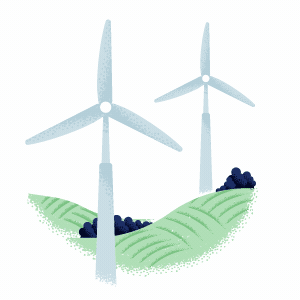
Low Carbon
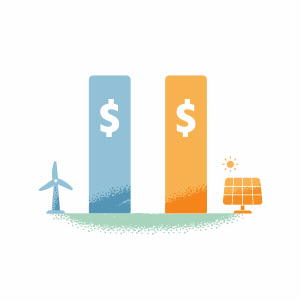
Low Cost
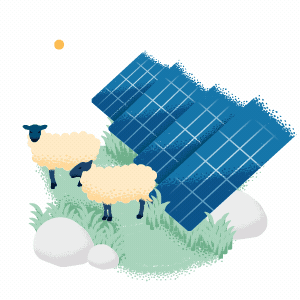
Low Conflict
Values at Risk
Rivers are the arteries of our planet: providing habitats, sustenance and quenching the thirst of people and nature.
Two billion people rely directly on rivers for their drinking water. But healthy and connected rivers deliver far more than water. Their extraordinary benefits include food; sediments and nutrients that nourish fields and deltas; recreational, cultural and spiritual values; and some of the richest ecosystems on Earth.
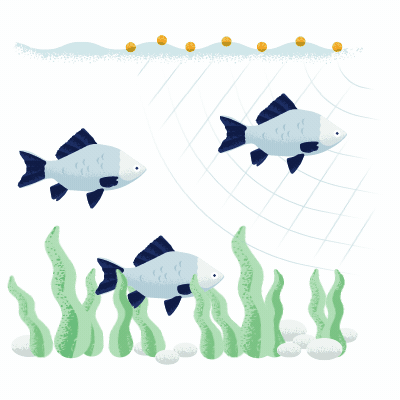
Fisheries
Rivers sustain some of the world’s most productive freshwater fisheries, providing food and livelihoods to hundreds of millions of people across the globe.

Recreation
From fishing to rafting, swimming to hiking, rivers inspire a multitude of recreational activities, worth over US$100 billion per year.

Biodiversity
Freshwaters support an impressively high number of species. Although freshwater habitats cover less than 1% of the globe, they host about 10% of all known species, including more than half of all fish species.

Floodplains
Healthy and connected floodplains can act as a buffer against the impacts of flooding and are the nursery and feeding grounds for numerous species. Floodplain agriculture is also often extremely productive due to the rich soils and connection to a natural source of water.

Cultural & Spiritual Values
Across the globe, rivers nourish human well-being and hold cultural or spiritual importance for their role within society.
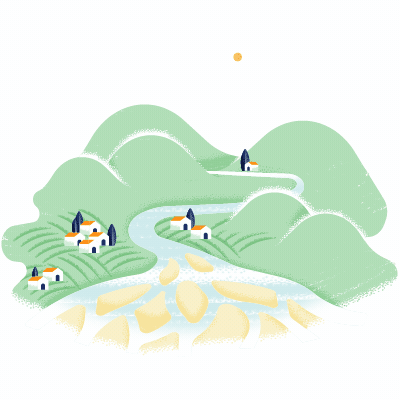
Sediment Flows & Deltas
Sediment flows are critical to the resilience of deltas. 500 million people live on deltas that rely on sediment replenishment from rivers to keep them above the rising seas.
Free-flowing rivers around the world deliver many of these benefits, including those featured in the following examples.
Many free-flowing rivers are at risk from proposed hydropower. It is too high a cost. And one we do not need to pay because there is a better way.
Solutions
We have the tools and technology to build a brighter future: power systems that are LowCx3 - low carbon, low cost and low conflict.
The challenge of meeting future energy needs while simultaneously reducing greenhouse gas emissions and protecting and restoring nature is enormous. But it is possible. The dramatic expansion of renewable energy does not need to result in significant losses of free-flowing rivers and biodiversity or trigger conflicts with communities and other sustainable development goals.
In contrast to the thousands of proposed new hydropower dams—which would fragment most of the world’s remaining free-flowing rivers—wind and solar can be built primarily on sites that would cause far less damage to nature, including already developed areas, such as rooftops, industrial zones, reservoirs, former mines, and pastures and other agricultural lands.
We have the tools to identify these low conflict areas and are working on providing the necessary level of detail worldwide - so we can effectively direct the expansion of solar and wind or alternatives to those areas.
For example, these maps below show wind resources and then environmental resources in the central United States. By overlaying these maps, we can see where wind development could trigger conflicts – and we can also identify sites for low conflict wind development. The low-conflict wind sites in the final map provide more than enough energy generation to meet renewable power targets in the US.
Existing global-scale mapping of sites for wind and solar indicates that more than three times as much energy available on low conflict sites as is needed to achieve IEA’s projections for a power system consistent with the 1.5 degree climate target.
Wind and solar need to be planned and sited carefully, but there are plenty of opportunities to expand those energy sources while avoiding and minimizing conflicts.
So, the world has abundant energy resources that are low carbon and low conflict – but what about low cost? And are they enough to run power systems that are reliable every moment of every day?
Due to the renewable revolution, the answer to both questions is ‘yes.’ The renewable revolution describes the dramatic drop in cost for wind and solar—solar has dropped by 90% in just the past decade—along with similar drops in cost for batteries. Combined with advances in grid management, we increasingly can develop power systems that rely primarily on wind and solar for new generation.
Each passing year brings lower costs and improved technologies for making LowCx3 power systems a reality. We already know what solutions are needed.
- Strategic planning of power systems can identify development options that are LowCx3, avoiding dams on free-flowing rivers and featuring careful siting of new wind, solar, and low-impact hydropower.
- Existing hydropower projects can be retrofitted and modernized to “firm up” wind and solar generation, while minimising any new impacts and addressing legacy impacts.
- Current and emerging storage technologies can absorb energy when it is plentiful and deliver it during periods when generation is lower.
- Advances in grid management—so called “smart grids”—can help stabilize the power supply, facilitating greater levels of wind and solar within a grid.
So what would this mean for rivers, biodiversity, and local communities?
In our report Connected and Flowing we showed how these solutions could produce LowCx3 power systems that, if implemented across the world, could reduce hydropower’s impacts on free-flowing rivers by 90% - safeguarding many of the crucial benefits they provide to people and nature, while also minimizing impacts on land and people from wind and solar development.
Time to Act
We are at the start of a massive global expansion of renewable energy to meet the growing demand for electricity and solve the climate crisis. Every one of us has a role to play in ensuring this growth is driven by low-carbon, low-cost and low-conflict renewables - to avoid harming free-flowing rivers, critical natural lands and local communities. Together we can all contribute to a brighter future.
Value
Smart decisions demand a solid understanding of where and how renewable energy development can best proceed without harming nature - through learning where high conservation VALUE lands, freshwaters and seas are located and how they can be protected while contributing to climate solutions.
- Map high conservation value lands, freshwaters, and seas, including connectivity
- Avoid renewable energy infrastructure that impacts high conservation value lands, freshwaters, and seas (e.g., no dams in protected areas)
- Universities provide knowledge base for understanding areas of value
- Communities, individuals and NGOs advocate for protecting high conservation value areas
- Do not fund projects in high conservation value areas
- Invest in technological and natural solutions to reduce socio-environmental impacts of renewable energy infrastructure
Plan
Make a PLAN to build a brighter future with the right renewables in the right places - 'smart from the start'. Energy plans must consider multiple scenarios that incorporate the values of healthy rivers and lands, and assess trade-offs across those values with energy costs, project delivery times, and other factors.
Energy master planning, or system-scale energy planning, that considers the full suite of options for energy generation, management, and delivery must consider the impacts of technology and siting choices.
The siting or location of renewable energy projects can profoundly affect the scale of negative impacts that energy development has on local communities and natural systems. Planners should utilize the tools and approaches that are available to avoid or minimize impacts from the expansion of renewable energy.
- Develop Energy Master Plans that prioritize low-impact renewables and maximize energy efficiency
- Site renewables right with system-scale planning and zoning for renewable infrastructure
- University and research centers promote research that supports energy and hydropower master planning
- Fund Energy Master Plans that prioritize low impact renewables
- Support creation of pre-planning facilities for energy project portfolio selection
- Support and incentivize energy policy reforms
Policy
Set POLICIES that chart a sustainable path for the renewable energy revolution. Modernization of energy-sector policies is needed in many countries to take full advantage of the energy revolution, including providing power to the nearly one billion people who currently lack access to electricity, transitioning to sustainable renewable energy solutions to combat climate change, and setting targets, laws and regulations that drive the expansion of renewable energy to low impact locations.
- Commit to ambitious NDCs that maximize uptake of low impact renewable energy
- Change regulations, subsidies and other policies to incentivize accelerated development of low-impact renewables
- Advocate for ambitious adoption of climate targets with low impact renewable energy
- Advocate for policy changes to incentivize low-impact renewables
Invest
Drive INVESTMENTS - from commercial and investment banks, bilateral and multilateral development banks, and other investors - into low impact energy solutions to dramatically increase the expansion of renewables and their smart siting. Set internal rules and investment criteria that make such investments standard practice today.
- Invest only in low-impact projects
- Establish investment policies that target renewable energy on low impact sites
We need to go beyond the Paris Accord commitments - to net-zero with renewables in the lead. We can commit to this future knowing that there are technologies, locations, and strategies that can help solve the climate crisis without leading to high impacts on nature, rivers, and local communities. Commit with confidence today!
COMMIT to a Net-zero carbon AND a low impact expansion of renewable energy to achieve a brighter future.
For references and methods, please click here.

















